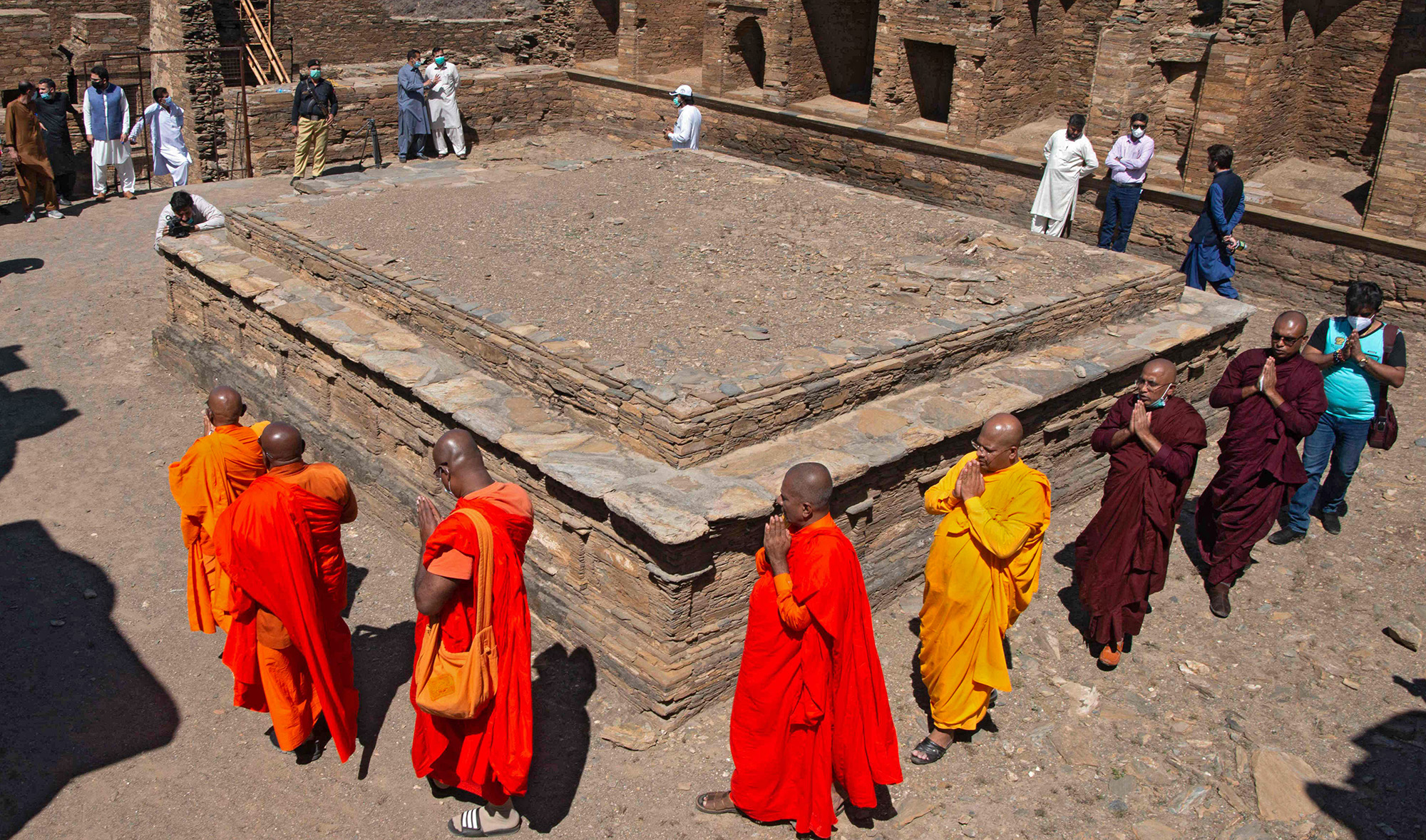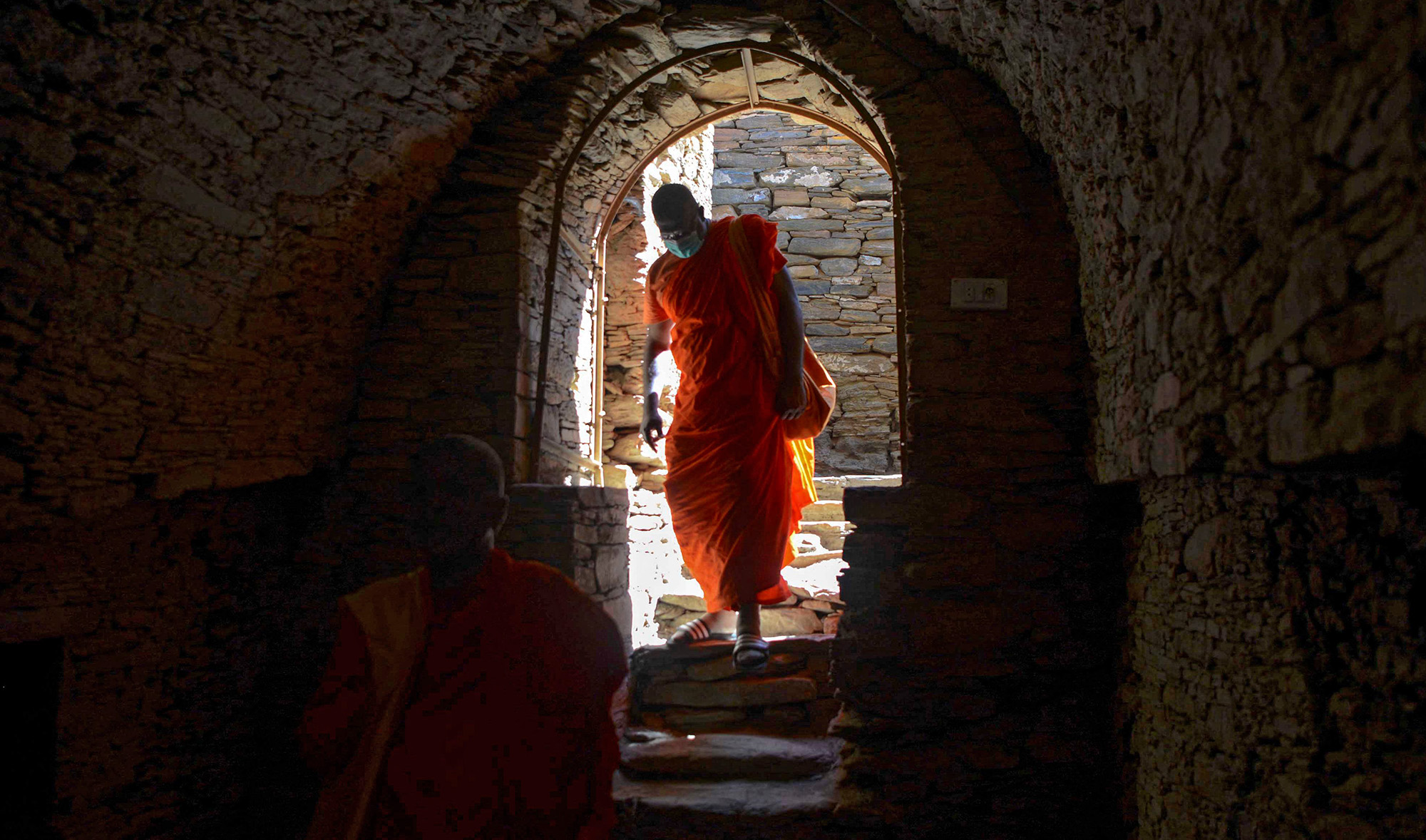JAULIAN/HARIPUR: A 14-member delegation of visiting Buddhist monks from Sri Lanka said on Thursday that Pakistan was home to one of the most exotic Buddhist civilizations of the past, and hoped other followers of their faith would explore the prolific religious heritage in the country.
Led by Dr. Walpola Piyananda, adviser to the Sri Lankan president and chief monk in the United States, the Buddhist delegation is on a week-long pilgrimage to holy sites in Pakistan.
“The current visit of Sri Lankan monks is part of our initiative to promote religious tourism which has tremendous economic potential. We are trying to develop and preserve 22 sacred religious sites to attract religious tourists from across the world,” Dr. Abdul Samad, Khyber Pakhtunkhwa’s director archaeology and museums said while talking to Arab News, and added that Prime Minister Imran Khan had invited the monks to tour the heritage sites in Pakistan during his visit to Sri Lanka earlier this year.

Sri Lankan Buddhist monks visit the Buddhist monastic complex of Takhi-i-Bahi (Throne of Origins) in Mardan district of Pakistan's Khyber Pakhtunkhwa province on April 23, 2021. (AFP)
“This Theravada delegation came from Sri Lanka to visit their holy places here in Pakistan,” Piyananda told Arab News in a brief conversation, mentioning the name of his monastic order. “Buddhists practice their faith in different ways, but we all are one in aspiring for peace, harmony and wisdom.”
Another senior monk, R. Rathanasira, said Pakistan could attract a significant number of Buddhist tourists if the sacred archaeological sites were well managed.
“During my childhood, I only heard about the Gandhara Civilization,” he recalled. “With so many resources related to Buddhist culture and civilization, Pakistan can draw a huge number of people from Buddhist countries if it preserves these sites well.”

Sri Lankan Buddhist monks visit the Buddhist monastic complex of Takhi-i-Bahi (Throne of Origins) in Mardan district of Pakistan's Khyber Pakhtunkhwa province on April 23, 2021. (AFP)
The monks on Thursday visited Jaulian in Khyber Pakhtunkhwa’s Khanpur district that once boasted of stupas and monasteries.
The place which was designated as a UNESCO World Heritage Site in 1980 is believed to be the cradle of the Gandhara kingdom.
Briefing the monks, Dr. Samad said Jaulian was one of the most prominent centers of Buddhist learning between the 2nd and 7th centuries AD.
“This visit is extremely important,” he told Arab News, “since these places are as sacred to Buddhists as Islam’s holy sites are to Muslims.”
The visiting monks met Pakistan’s religious affairs minister Noorul Haq Qadri in Islamabad on Wednesday during which the two sides decided to form a working group to develop and promote religious sites related to Buddhism in the country.
According to a statement issued by the ministry after the meeting, the Sri Lankan side proposed institutionalizing Buddhist scholarships for international students to create greater awareness about their religion.
The Sri Lankan delegation is also scheduled to meet Prime Minister Imran Khan before wrapping up their visit to Pakistan.
















